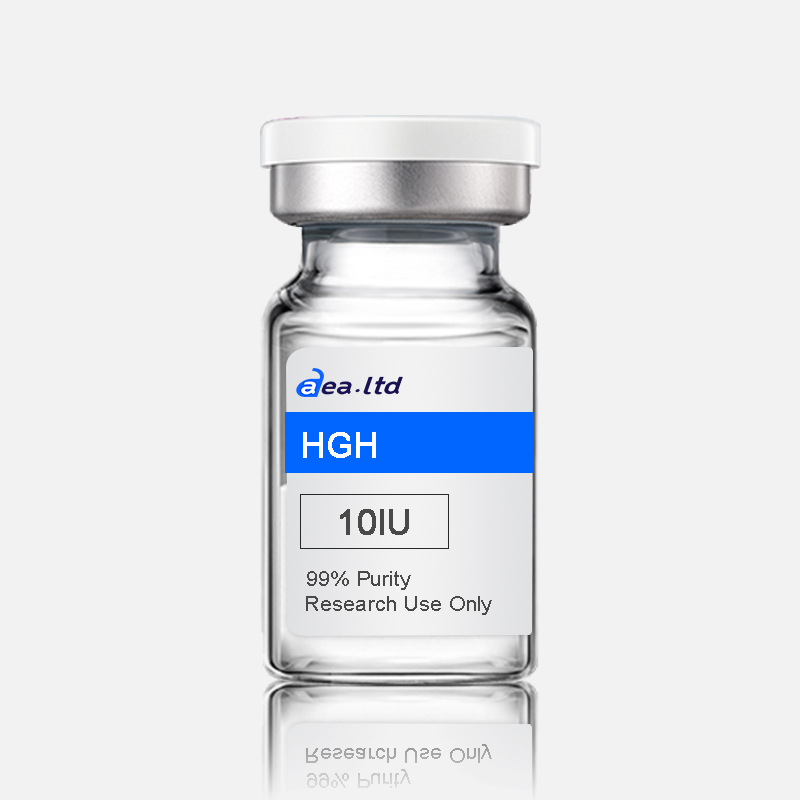HGH

उत्पाद विवरण
What Are the Benefits of HGH (Human Growth Hormone)?
Human growth hormone can be injected in larger doses to promote weight loss and increase muscle size, while a small doses can be used for general recovery, health and ignite the anti-aging process. Presently, there is a growing list of benefits of HGH treatment in children, adolescents and adults.
①Increased Muscle Strength
Human growth hormone has been known to improve physical capacity of individuals by stimulating collagen synthesis in the skeletal muscle and tendons, increasing muscle strength and improving exercise performance as a result.
In the International Journal of Endocrinology, 14 healthy men at the ages of 50 to 70 were randomized into two groups for a study. Seven subjects were administered HGH therapy with seven placebo subjects, and they were re-evaluated after six months.
After six months, there was a significant increase in the leg press responsiveness muscles in the growth hormone group.
②Better Fracture and Wound Healing
Administration of human growth hormone has been shown to speed up the regeneration of bone, making it a key part of bone healing. Applying growth factors like IGF-1 is known to stimulate the metabolism of bone.
In a study published in the journal BONE, growth hormone was systemically applied to recombinant species-specific rats by subcutaneous injections and was compared to the placebo group. As a result, the local growth factor application revealed a stronger effect on fracture healing than the systemic human growth hormone injection.
These observations suggest that the local application of growth hormone speeds up fracture healing significantly without systemic adverse effects.
Researchers have reported the beneficial effects of HGH in enhancing the healing of injuries and wounds significantly. A randomized, controlled, double-blinded study of six months of HGH therapy found that healthy older men who were administered growth hormone had enhanced collagen deposition during the wound-healing process, helping the healing process.
③Enhanced Weight Loss
Obese individuals have limited response to growth hormone stimuli release, and after successful reduction of weight, growth hormone responsiveness can be partial or complete.
Growth hormone accelerates lipolysis, the breakdown of lipids, and involves hydrolysis of triglycerides into glycerol and free fatty acids. Impaired secretion of human growth hormone leads to loss of lipolytic effect.
Dietary restrictions and growth hormone treatment effects on anabolic and lipolytic actions as well as the changes in growth hormone secretions and insulin were investigated in a study published in Hormone Research.
Twenty-four obese participants were on a hypocaloric diet and treated with recombinant human growth hormone or a placebo. Growth hormone treatment caused a 1.6-fold increase in weight loss, with the greatest loss being visceral fat compared to the placebo. In the placebo group, lean body mass was lost, whereas lean body mass was gained in the growth hormone group.
This study suggests that in obese participants who eat a caloric-restriction diet, growth hormone accelerates the loss of body fat and improves growth hormone secretion. Thus, human growth hormone can serve a therapeutic role to help obese people lose weight, including losing belly fat.
④Stronger Bones
The pituitary gland stimulates the release of growth hormone and is essential for regulating bone growth (including helping children grow taller), especially during puberty. Growth hormone stimulates the production of IGF-1, which is produced in the liver and released in the blood.
With age, human growth hormone decreases and may be the cause of older individuals not being able to form or replace bone rapidly. The IGF-1/growth hormone duo stimulates bone-forming and bone-resorbing cells, leading to increased bone mass.

